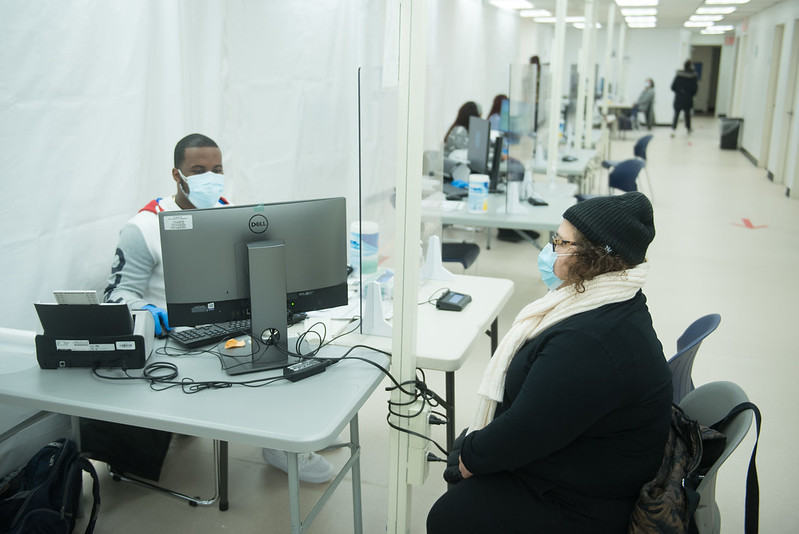
Getting help (photo: Michael Appleton/Mayoral Photography Office)
Very often patients with serious issues such as active hallucinations, self-harm behavior, severe depression, and suicidality wait for days in common spaces or crowded hospital hallways for observation or the next available inpatient psychiatric bed. I’ve seen patients in need of hospitalization far exceed available beds in New York City. For someone experiencing a mental health crisis, such an experience can be traumatic and triggering. It impacts quality of care and prolongs and complicates treatment. It shouldn’t happen.
Over the years, demand for psychiatric services has increased, while the number of psychiatric beds and services have decreased due to hospital closures and funding cuts from the state. Under Governor Hochul, the state has made up for some of this shortfall with recent historic investments in the mental health workforce, in new program models, in services, and a commitment to bring more beds online — but more must be done to improve our entire behavioral health care system, which is siloed and lacks the coordination to ensure appropriate care.
There is a good chance that the same patient who waited days to get a psychiatric bed will be discharged from the hospital with fragmented medical and psychiatric follow-up plans. They may have to wait a month, or more, after discharge to be seen in the community. This is why so many people cycle in and out of emergency rooms.
The lack of coordination also leads to redundant services, which drive up costs and reduce quality of care. The United States has one of the most inefficient healthcare systems. Some of this inefficiency stems from redundant medical services costing an estimated $700 billion per year, according to the Congressional Budget Office.
We need real-time coordination between hospital systems, outpatient services, criminal justice systems, and substance use treatment programs, so that we can implement collaborative treatment plans that provide efficient, cost-effective, quality care.
Ensuring patients can access care in the community has also been a challenge. One key change that helped mental health professionals improve service delivery is the expansion of telehealth. When we began using telehealth at ICL at the start of the pandemic, the number of clients who kept medical appointments increased. Surveys of our clients indicated they enjoy the convenience of speaking with a provider over the phone or computer, rather than visiting a clinic.
With the COVID-19 public health emergency declaration that expedited the adoption of telehealth set to expire this year, New York State must make sure providers continue to have the flexibility to deliver various forms of therapy virtually at all levels of care.
Many clients don’t have the access or technological capability to use a computer for telehealth. For them, a phone call is the best way to get care. We need a telephone option in telehealth services so that these patients remain engaged in care, making it less likely that they’ll be back in an emergency room seeking treatment.
Our behavioral health care system is struggling, and fixing it is a public health imperative. To begin to meet the challenges of this crisis, we need the state to increase the number of psychiatric beds, break down silos and better coordinate services, and ensure providers have the flexibility to continue to provide telehealth services to their clients. This will help deliver life-saving care to New Yorkers in need.
***
Dr. Victoria Pham is Chief Medical Officer at Institute for Community Living (ICL). On Twitter @ICL_inc.
***
Have an op-ed idea or submission for Gotham Gazette? Email This email address is being protected from spambots. You need JavaScript enabled to view it.